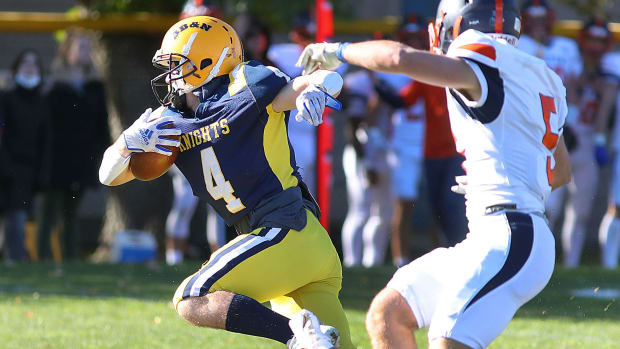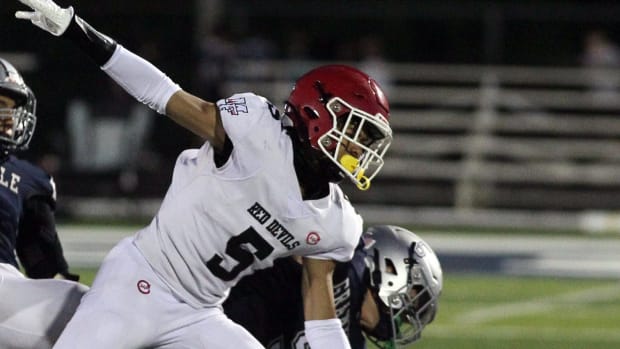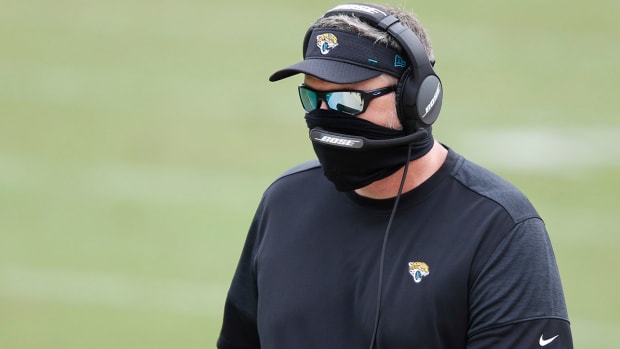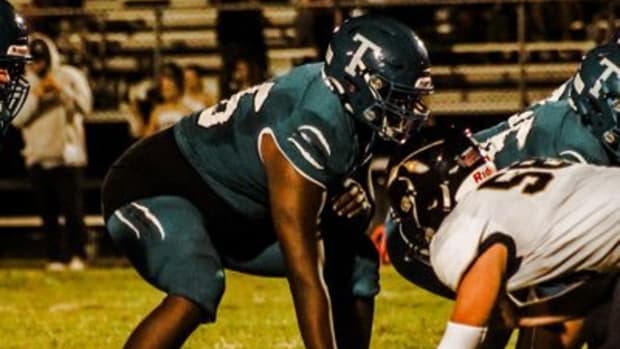Ten Ways to Spark the Syracuse Offense
It is no secret that the Syracuse offense has been bad this season. Syracuse is averaging just 16.2 points per game and 249.7 yards. For a head coach that is known for offense, this is subpar to say the least. There are factors for this that should be considered. The offensive line has been riddled by injuries including starters who are not close to one hundred percent. Syracuse is starting who they expected to be their fourth running back. They are down to their third quarterback.
That said, what can Syracuse do in order to try to spark some better offensive play for the last two games? Here are some options.
1. Rely on the rushing attack
The Syracuse offense is only averaging three yards per carry on the season, but that number is a bit misleading. Included in that average are the 35 times Syracuse quarterbacks have been sacked for a total loss of 205 yards. If you take those away, Syracuse is averaging 4.4 yards per carry. Sean Tucker is averaging over five yards per tote. With the struggles of the passing attack and in pass protection, rely on the running game. Have that become the focal point of the offense. And that means more than just more handoffs. That means a variable rushing attack with zone-read, draws, off tackle, sweeps, zone blocking schemes on outside and inside runs, etc. Counter off of plays that you run more often to take advantage of defenses leaning a certain way. A varied and more voluminous rushing attack could help set up shorter third downs and keep drives alive.
2. Use more tempo
We have not seen much tempo this season, but it has worked when they've used it. A lot of this has to do with success, or lack thereof, on the first plays of drives. However, given the circumstances, Syracuse should force tempo regardless. It makes the quarterback more comfortable. It allows the offense to get into a rhythm. It keeps defenses on their heels. And you can do this while incorporating number one. Few teams that go tempo do so with a rushing attack. It would unorthodox, progressive, unexpected. And it just might work.
3. Open up the playbook
The play calling for Syracuse this year has lacked imagination for most of the season. There have been a rare occurrence, but largely it has not been there. Yes the struggles of the offensive line and playing backup quarterbacks play a part in that, but at this point what do you have to lose? Where are the creative plays such as a running back pass we used to see with Dontae Strickland? Where are the reverses? Where are the trick plays? No you cannot rely on trick plays for sustained offense, but you can break one or two out per game to provide a spark. There is no reason not to at this point. Running the same short and intermediate hooks and slants is not working.
4. Take some shots down field
When Tommy DeVito, and even Rex Culpepper, were at quarterback, Syracuse took deep shots at least a few times per game. Since Jacobian Morgan has become the guy, that has stopped. It needs to come back. It puts pressure on the opposing defense, doesn't allow them to sit on the short routes and provides a potential for a big play.
5. Use the tight ends
This has been harped on all season. Syracuse has matchup problems for opposing defenses in Aaron Hackett and Luke Benson. They should be used. This can go along with opening up the playbook. Get them involved in creative ways. They can attack the middle of the field, use Luke Benson down the field to take some of those shots mentioned above. If Syracuse came out against NC State and went to the tight ends on four of their first five passing attempts, for example, it would open up so many other things for the rest of the game. It allows Syracuse to use the same personnel to run and pass. To fake one and do the other. The possibilities are endless.
6. Get the QB out of the pocket
With the struggles of the offensive line, this is a no brainer. Jacobian Morgan is athletic and throws well on the run. Especially when teams are getting pressure on him, including bringing blitzes on a regular basis, Syracuse should roll Morgan out of the pocket. This does a couple of things. First, the offensive line rolls with him and helps mitigate the pass rush. Second, it reduces the reads for Morgan and simplifies his options as he is only looking at one side of the field. This is not something that has to be done 20 or 30 times per game, but can be done on a handful of spans to change the look and help slow the pass rush.
7. Use the slot receiver
The other lost art in the Syracuse offense is the slot receiver. Erv Philips had a tremendous career at Syracuse, largely within the Dino Babers offense. He was targeted by Eric Dungey often more than a dozen times per game. It worked. He exploited the middle of the field, along with the tight end. You could use him on bubble screens, quick throws over the middle and even down the field as well. A few targets to the slot on quick plays will open up the ability to take that with a double move and take a shot down field. When the Babers offense is rolling, they are attacking all areas of the field. That means outside receivers, slot receivers and the tight end. They need to get back to that. Nykeim Johnson is capable of being a weapon.
8. Misdirection
Defenses are being very aggressive against Syracuse. They are blitzing, attacking the quarterback and trying to force mistakes. How can you take advantage of this? Misdirection. That means giving a certain look on a run play that you use several times, and then countering off of it the other way with the same look. That means reverses to the wide receiver once or twice per game to keep the defense honest. That means post snap motion to one side of the field and throwing back to the other. These are options to take advantage of the aggressiveness of opposing defenses that could provide a spark for the Orange.
9. Pre-snap motion
When was the last time a receiver went in motion? Or a running back motioned out to the slot? Or some other pre-snap motion? It seems like it has not happened much at all this season, and could be a way to help a young quarterback. Motioning a wide receiver can help identify man versus zone or give other tells on the defense's call that play. It also can allow an offense to get the matchups it wants, or catch a defense off guard. For example, if Syracuse lines up in a certain formation with the tight end lined up at the end of the offensive line and runs the ball each time for a portion of the game, they can use that to motion the tight end out to the slot at the last minute. Snap the ball, the opponent is expecting a run and not the tight end motion, you have them on their heels. It forces the defense to think, to react, and gives you an advantage.
10. Screens
Again, with aggressive opposing defenses, screens can help combat that. Screens to the back, screen to the receivers and even to the tight end. A tight end screen is not run much at all across college football, and Syracuse has tight ends that could be successful with them. A quick bubble to the slot receiver, a traditional screen to the running back or even one to the tight end could provide positive plays that both help the offense move the ball and slows down the opposing pass rush. Syracuse used to run them on a regular basis. They seem to have disappeared from the offense.



